Power + Values (Creators Against All Odds)
By Grant Hansen
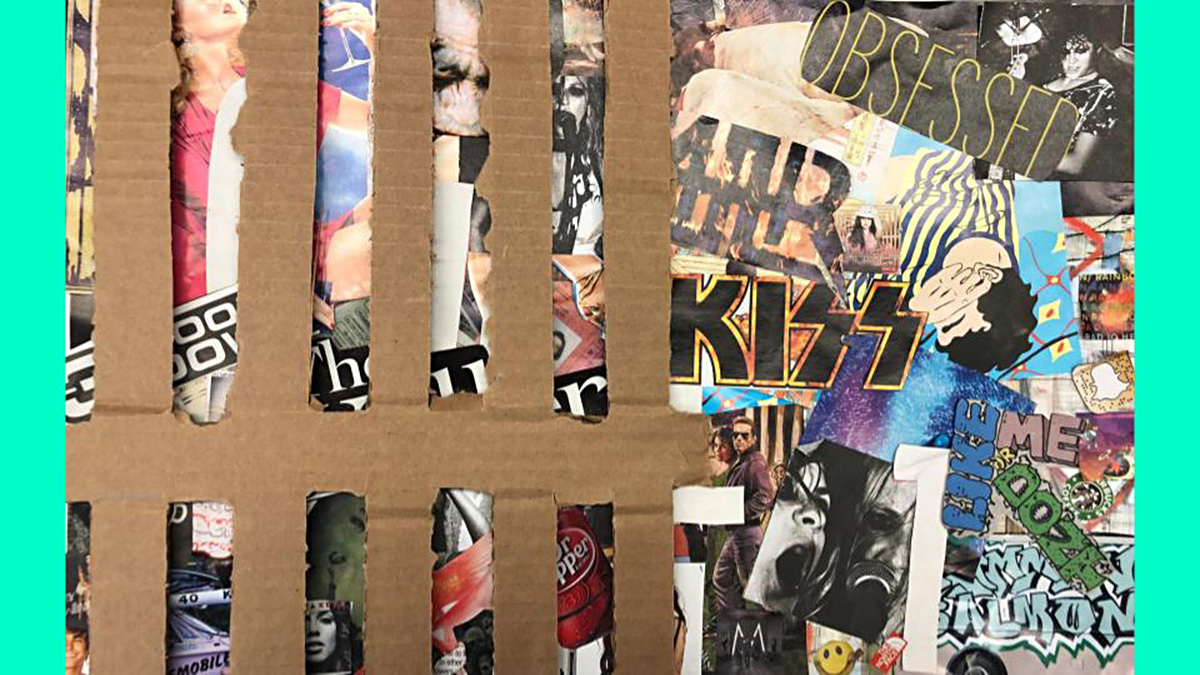
Students in an Art II class from the Gage Park and Marquette Park neighborhoods in Chicago set out to examine value systems in their communities. Students explored a series of questions through dialogue, presentations, and art-making as they collaboratively shared, analyzed, and evaluated their power to address a challenging climate of community issues. Students then created mixed-media collage artworks that sought to question why their values were sometimes oppressed by the issues that plague their communities.
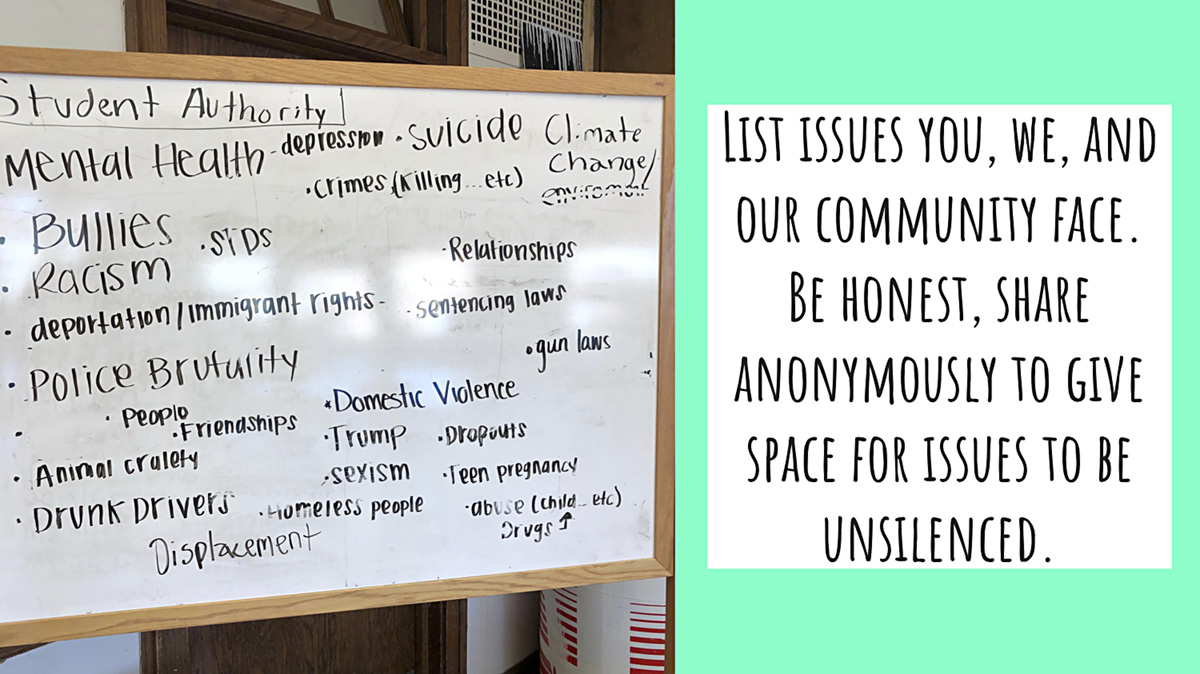
Objectives
- Students will be able to evaluate and analyze both their own and others’ value systems & power structures.
- Students will be able to read about, analyze, and rethink power structures.
- Students will be able to assemble a collage that represents their values, finding images in magazines and creating a visual backdrop of their own values.
- Students will be able to work collaboratively to identify issues that impact their communities and create artwork in response to these issues.
- Students will create an image that represents an oppressive issue in their community and use this image to obstruct part of their value collage.
- Students will be able to reflect on the artwork they created and respond to their role and power in the making of the artwork.
National Visual Arts Standards
- National Visual Art Standard: VA:Cr2.1.IIa — Through experimentation, practice, and persistence, demonstrate acquisition of skills and knowledge in a chosen art form.
- National Visual Art Standard: VA:Re.7.2.Ia — Analyze how one’s understanding of the world is affected by experiencing visual imagery.
- National Visual Art Standard: VA:Cr1.2.IIa — Choose from a range of materials and methods of traditional and contemporary artistic practices to plan works of art and design
Key Guiding Questions
- How do the things we value impact our lives and differ from others’ values?
- Why do you value the things you do? Is it because you are told to? Do you choose?
- What issues are present in our community?
- Why might we sometimes feel that “our values are oppressed by the issues that affect our community”?
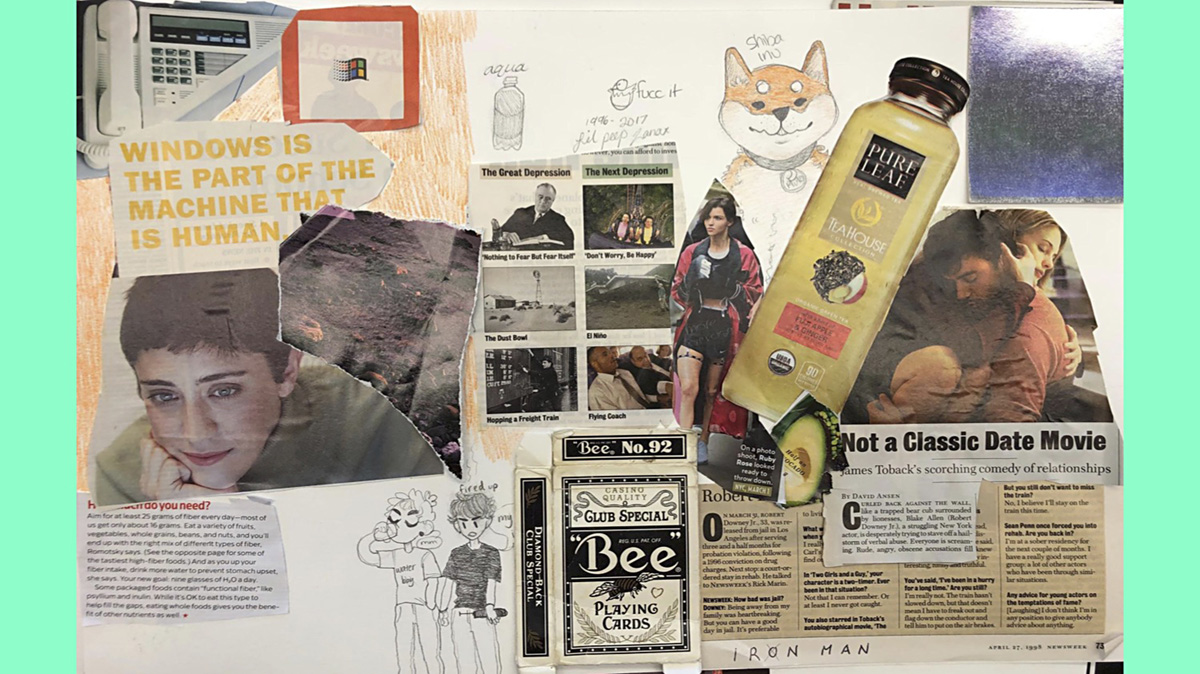
Documentation + Assessment Strategies
Students documented the process using camera phones and sent imagery to the teacher via email. Student responses, images, and ongoing photographs of the project were collected in Google Classroom.
Students collaborated with the teacher to agree upon an assessment rubric, as follows:
Student accomplishes all 6 objectives = A, 5 objectives = B, 4-3 = C, 2 = D, 1 = F. All students completed their projects with an A or B. Students who received a B had not yet found time to reflect on their artwork or participate in critique due to absences. Critiques consisted of students sharing post-it notes in front of artworks on easels and reading what other people had written.
Learning Activities
Timeframe
This project lasted for 5 weeks. Students met 4 days a week for 50 minutes. Each week was broken down into Presentation Days, Studio Days, and Sketching Days.
- Bell Ringers: lasted no more than 5-10 minutes and introduced a question that aimed to get students thinking about their power and values.
- Presentation Days: 10 minutes for a bell ringer — analysis Depth of Knowledge Level 4; 40 minutes for student-engaged teacher presentation and class discussion.
- Studio Days: 5 minutes for a bell ringer/hook; 40 minutes to create the artwork; 5 minutes for clean-up.
- Sketching Days (every Wednesday): 25 minutes sketching based on group or individual themes, randomly selected green cards from the Apples to Apples game, prompts generated using Tier 3 art vocabulary, or project-related SAT vocabulary words selected by rolling 20-sided die. Students complete one sketch per week.
SETTING THE STAGE
Students in this Art II class have completed Art I with at least one ‘A’ or ‘B,’ and the class is mostly made up of seniors who range from extremely independent gifted students to students with specialized needs and IEP accommodations. We established an open, friendly, and sharing classroom environment at the beginning of the year. Students geared up for making art around the issues in their community by exploring the contemporary artists on exhibit at the MCA (Amanda Williams & Michael Rakowitz) and other artists who examine the intersection between community issues and artmaking (Ai Weiwei, Krzysztof Wodiczko, and Banksy). Prior to this project, students created a collaborative mixed-media drawing that warmed them to the idea of opening up and sharing their thoughts in response to difficult questions. To maintain students’ involvement and collective interest, I relied on contemporary culture hooks in the bell ringers that pushed students to analyze their own thoughts on power and value and incorporate them into their artworks. Students worked collaboratively, sharing their ideas and giving each other feedback during the project.
STEP 1
How do Artists Work?
Students participate in a bell ringer, and then learn about contemporary artists Amanda Williams, Ai Weiwei, Michael Rakowitz, Banksy, and Krzysztof Wodiczko. Students reflect on how these artists deal with the concept of value.
STEP 2
Visit the MCA
Students visit the MCA and engage in dialogue about works by Amanda Williams and Michael Rakowitz.
STEP 3
Who Decides?
Act I: Value Systems. Students answer questions about values using the ‘Four Corners’ debate system, in which students physically take positions in the room based on their responses (strongly agree, agree, disagree, strongly disagree). Students respond in writing to the prompt “Why do I value what I value?” Using Google Classroom, students post images of “something you value that someone else may not value.”
STEP 4
What Do We Value?
Teacher presents each student with another student's image of what they value, posted in Step 3. Each student takes on the role of the ‘fake expert’ on the image and explains the value represented by the image, and why someone would value the concept or object depicted in the image. Students reflect on this process by sharing their own images of value in Google Classroom, outlining why they chose their images and objects. Students respond to two questions via a class poll: “What system of value do you most identify with?” and “Where do you find the most value: Home, City, Country, World?”
STEP 5
The Library is Open
Students visit the local Public Library and select two independent readings, seeking to check out one book about something they value and one book about an issue in the community. For some students this means signing up for a library card and visiting the library for the first time.
STEP 6
Issues in the Community
Act II: Power Structures. Students identify issues that affect their communities by writing the issues on the whiteboard anonymously. Students choose an issue from the board that they feel is negatively impacting their community by oppressing their values. Later, students will create an image that represents this oppressive issue to use in a collage project.
STEP 7
Who Has the Power
Students identify power structures and respond to the guided questions/bell ringers for Act II (see above) by drawing in their sketchbooks.
STEP 8
History of Power
Act III: Changing History. Students respond in writing to prompts on the role and use of power throughout history (Act III questions, see above). Students identify specific changes they personally would like to make in their community.
STEP 9
Defining Our Mission
Students collectively define a mission statement to capture their thoughts and feelings that have emerged from the previous activities during their investigation of the themes of values and power.
STEP 10
Agents of Change: Value Collage
Students utilize their research and reflection on value and power to address their chosen community issue through art-making. Students appropriate imagery and text from magazines and create a collage that captures the value(s) related to their specific issue.
STEP 11
Agents of Change: Issues/Power Representations
Students create imagery or symbols using cardboard stencils and/or paint to represent the issue of oppression in their community, which they shared in Step 6. Students then deliberately obstruct a portion of their collage with this image.
STEP 12
Agents of Change: Spreading the Message
Students collectively decide where to display their obstructed collage artworks. Students engage in self-reflection and critique. Some students conclude that their actions are “shining lights on the issues” that are the most important in their lives. Students reflect on their feelings about struggling to cover up the things they value with the obstructing image that represents the overshadowing community issues.
Possible reflection prompts:
- Where do you see room to change or adjust your artwork?
- When completed, what do you feel about having your values overshadowed by the issues of the community?
- Why might it be difficult to cover up the things you value with imagery that represents the issues in the community?
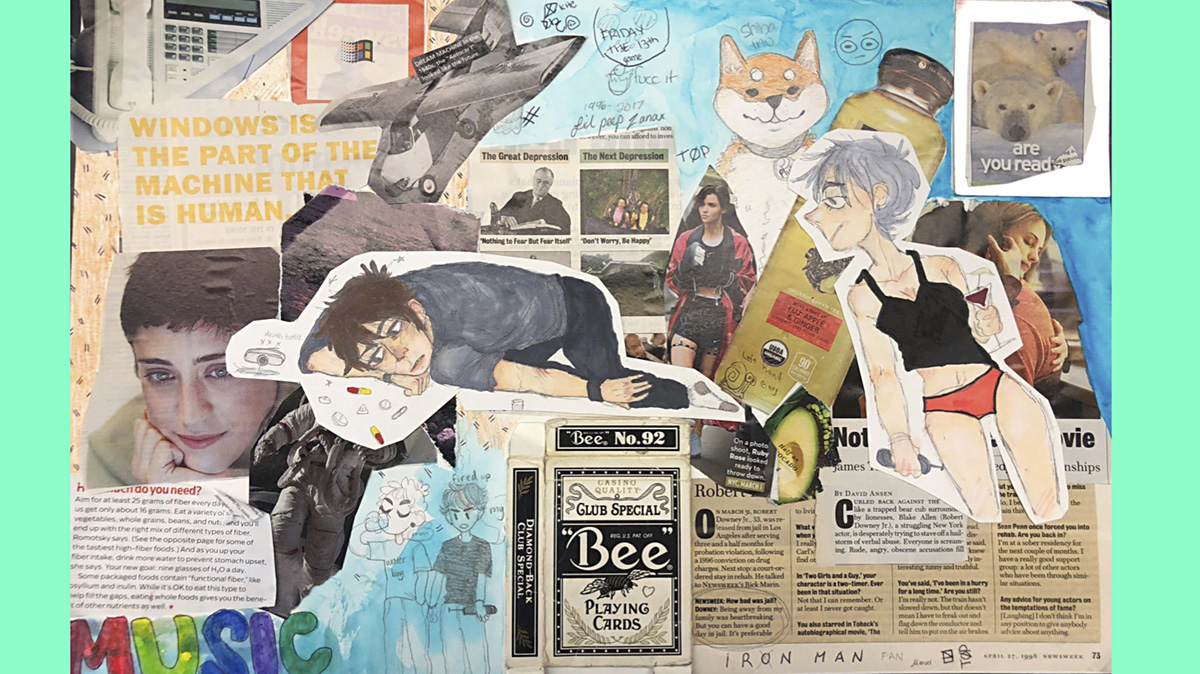
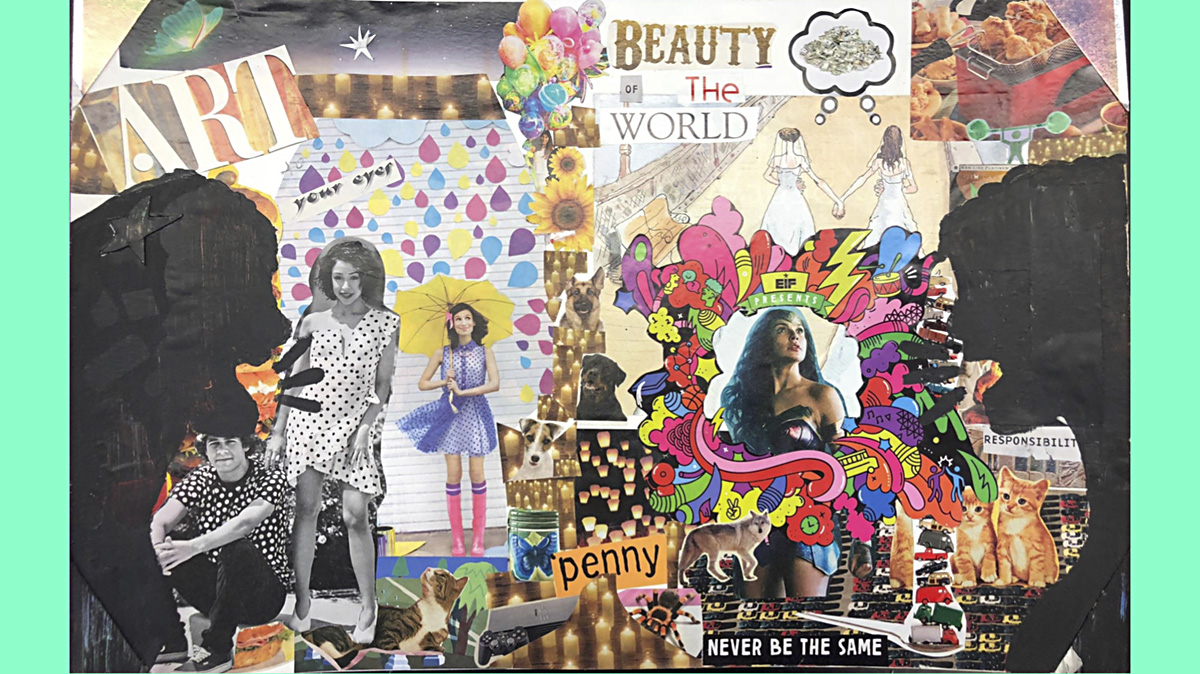
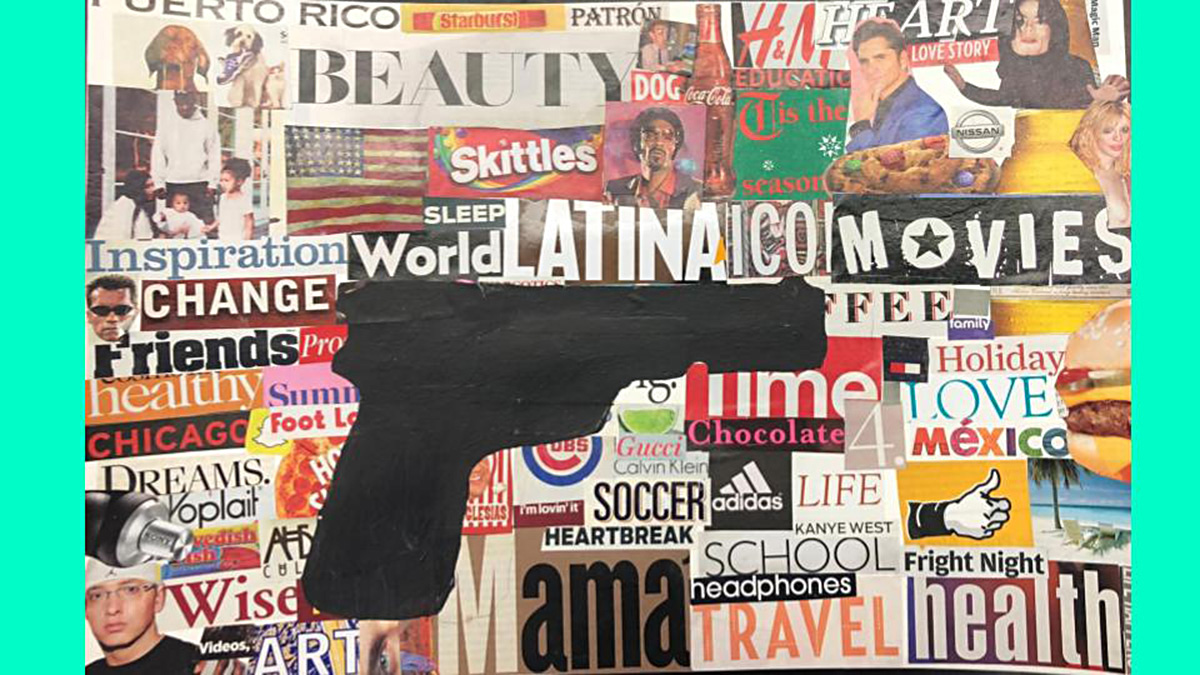
Materials
- Found images cut out or torn out from magazines
- 20 sheets of 18x14-inch watercolor paper
- 20 pairs of scissors
- 20 glue sticks
- 20 sheets of 18x14-inch cardboard
- Acrylic paint
- Illustration markers
- Thin black sharpies
- Pencils
MCA Connections
Near the beginning of the project, I brought students on a field trip to the MCA to see artworks that they used as a jumping-off point. We focused on the artworks of Amanda Williams & Michael Rakowitz to explore the concept of value. Students were able to make real-life connections between guiding questions and their experiences with the artworks. Throughout the project, these artists’ works helped students to find relationships to display value and power in their collaborative efforts and individual collages.
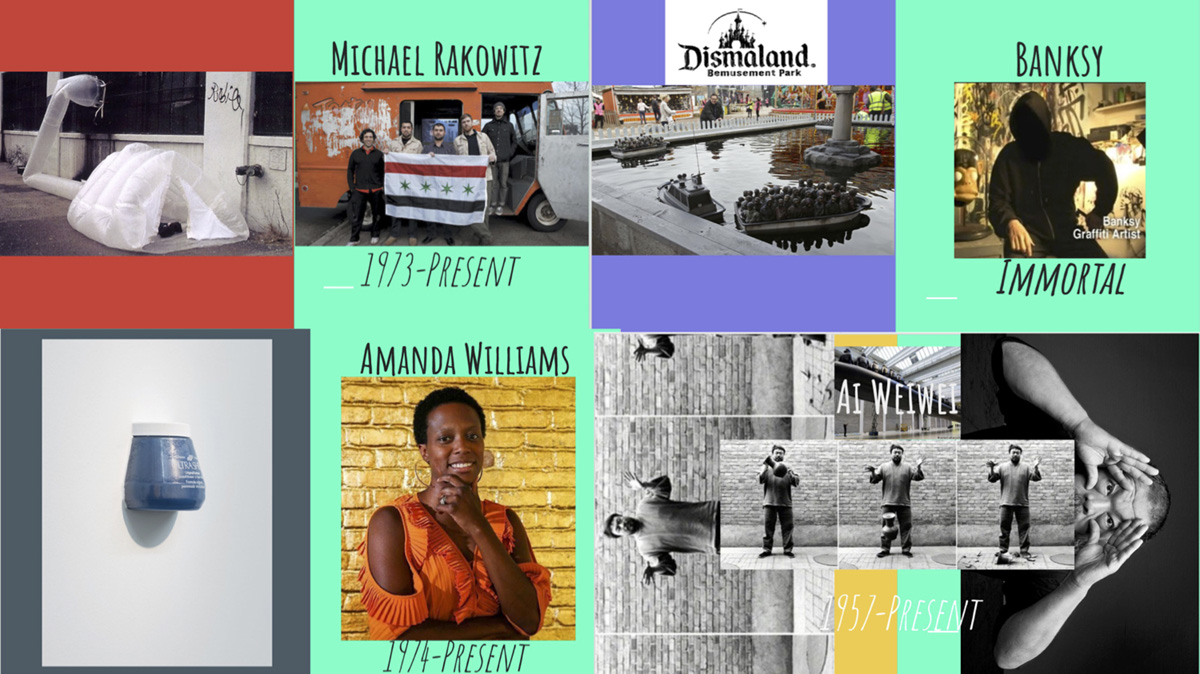
References + Resources
Grant Hansen
Gage Park High School
About Grant Hansen
Grant Hansen graduated from the University of Illinois at Chicago with a BFA in Art Education. He currently teaches at Gage Park High School, where his classes focus primarily on drawing and painting, but he encourages students to explore other media like photography, video, and sculpture. He wants to help students discover a new form of communication or make something beautiful that helps them deal with their struggles.
Grant Hansen’s artworks are primarily in oil and ink, but he incorporates unusual material like honey and polyurethane to suspend pigment for added dimension and texture. He is interested in natural changes to materials over time and embraces chance and unpredictable outcomes. This school year, Grant has focused on painting 3 large 4x4-foot paintings for the IHSAE Art Educator Exhibition. Grant brought his studio practice to the classroom, painting two of the three works alongside students, who were fully engaged and independent in the studio.
Grant Reflects on the Project
It was a profound moment when a student came up with what would become our mantra for the class when creating the Power and Values collages, explaining how “Sometimes our values are oppressed by the issues that affect our community.“ This experience empowered most students, but a few felt challenged by the burden of addressing or avoiding the issues closest to them. Others found power in creating a representation of their values and community issues.
Students’ understandings of personal values and community issues changed during the project. Initially the class was going to use monochromatic stencils with cardboard and paint, but students didn’t necessarily want to obstruct their values. Thus the obstacle I encountered was the apprehension some students had in placing the image representing community issues on top of their layers of value images in their artworks, so we came up with multiple approaches to achieving this, rather than everyone just creating stencils.
Students were more accepting of diversity in the classroom and understood that personal values were made more complex because of the issues in the community. Their understanding of the issues changed over time, from abstract things that impact them to inspiring images that physically block out the images representing their values. Over the course of the project, the opposition between their values and the community issues became tangible — community issues were weighing on them.
